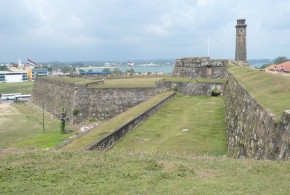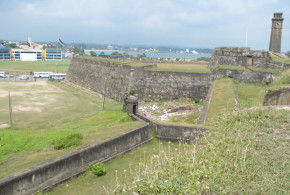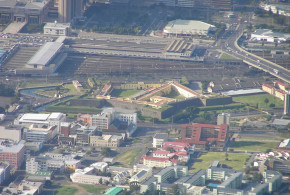Written by Robbert Kock. English text revision by Dietrich Köster.
Since the Spaniards arrived in Chile in 1535, Valdivia was one of the first cities, which the Spanish colonists founded. The city, founded in 1552, was named after the Spanish explorer Pedro de Valdivia. He became the first governor of Chile from 1541 till 1553. The main reason for the Spanish colonization in the area was gold. In fact in the area they found many gold mines. The first contact of a Dutchman with Chile was in the year 1600, when a Dutch pirate called Sebastian de Cordes captured Valdivia from the Spaniards. He left the place after a few months.
The Dutch West-India Company (in Dutch: “Geoctroyeerde West-Indische Compagnie” or WIC) had always wanted to have parts of Chile, because they also wanted to trade in gold. But the Dutch East-India company (in Dutch: “Vereenigde Oost-Indische Compagnie” or VOC) was also interested in this type of trade.
The Dutch decided to send an expedition to Chile. The leadership of the expedition was entrusted to Hendrick Brouwer, a Dutch General, who had been in service of the VOC. He had been a commander of a fleet of ships and he was the “Opperhoofd” (Governor) of the Dutch post in Deshima/Japan. He had discovered a new sea route to Dutch India, and he had been Governor General of the VOC. Brouwer was a men who treated his men with great rigour. His assistant was Elias Herckmans, who had worked with the WIC, having made his mark with the capture of Dutch Brazil.
In 1642 the expedition finally left from Dutch Brazil towards Chile. The route was for Cape Horn through the Le Maire Strait. The tasks, which the Company gave Brouwer, were: To capture the first gold mines, to capture the city of Valdivia, to discover the island of Santa Maria and to make alliances with the Indians. Moreover Brouwer had to find out, if it was possible to capture Peru.
When the Dutch arrived in May 1643, they didn’t need to do much to capture Chiloé island from the Spaniards. Brouwer had also met an Indian tribe: the “Araucaniers”. The Indians hadn’t liked the Spanish colonists, because the Spaniards wanted their gold. Brouwer said that he wanted to get rid of the Spaniards as well. Thus they became ‘partners’. Everything seemed to go well until General Hendrick Brouwer died on 7 August of the year 1643 in Puerto Inglés.
The much milder vice-general Elias Herckmans took over the command. He arrived in Valdivia on 24 August and easily captured the city of Valdivia. Hendrick Brouwer’s body was buried in Valdivia, which was called after him “Brouwershaven”. The death of Brouwer was the first evidence that the expedition would be a failure. Two things went wrong: Elias Herckmans let the Indians know that he and the other Dutch were looking for gold. This meant the end of their cooperation. He was soft to his men, eventually causing them to start a mutiny. This circumstance let him decide to go back to the Dutch part of Brazil, when no more progress turned out. The only thing, which the expedition had found out was that they got to know that “Staten Island” (Isla de los Estados de la Tierra del Fuego) wasn’t a part of the unknown “Southland”, but an island.
Herckmans and the Dutch expedition left Valdivia on 28 October 1643 for Dutch Brazil. The expedition had failed. After the Dutch expedition the Spaniards returned to Valdivia and built stronger forts, because they didn’t want to have an attack of another European country again. Brouwer’s body was disinterred and burned.
BIBLIOGRAPHY:
– Various Authors “Colección de Historiadores de Chile y de Documentos relativos a la Historia Nacional. Tomo XLV. Los Holandeses en Chile”
x+438 pp. Imprenta Universitaria, 1923 , Santiago, Chile.
Index: “Población de Valdivia : motivos y medios para aquella fundación, defensas del Reino del Perú para resistir las invasiones enemigas en mar y tierra, paces pedidas por los indios rebeldes de Chile, acetadas y capituladas por el gobernador ; y estado que tienen hasta nueve de Abril del año de 1647 A. D. Philipo IIII N. S., el piadoso Rey Católico de las Españas y Emperador de las Indias / por el Padre Maestro Fray Miguel de Aguirre. Lima : Casa de Julián Santos de Saldaña, 1647”
– “Journael ende historis verhael van de Reyse gedaen by Oosten de straet le Maire, naer de Custen Chili, onder het beleyt van den Heer Generael Hendrick Brouwer, inden jare 1643 voor gevallen, etc.”
 Colonial Voyage The website dedicated to the Colonial History
Colonial Voyage The website dedicated to the Colonial History























